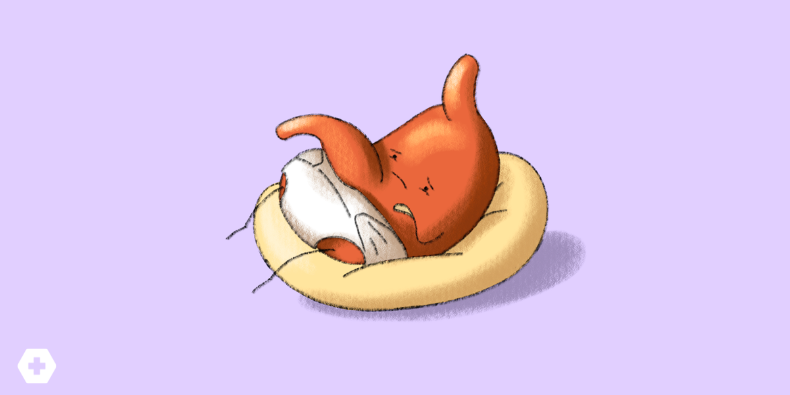
Pyloric Stenosis: Don’t Miss This Classic Diagnosis

Imagine this: a 4-week-old infant is brought to your urgent care with persistent vomiting. The parents are anxious, the baby looks a bit dry, and your differential is wide. Does pyloric stenosis come to mind?
For many of us, deciding when an infant needs to be transferred is straightforward. But distinguishing between causes of infant vomiting (i.e., pyloric stenosis vs. intussusception) often sends us scrambling for a quick refresher.
Let’s break down what you need to know so you can act with confidence in these situations.
What Is Pyloric Stenosis?
Pyloric stenosis is caused by hypertrophy of the pyloric muscle, leading to gastric outlet obstruction—a narrowing of the passage between the stomach and duodenum. It’s a surgical emergency and a classic cause of projectile vomiting in infants that’s easy to miss if you’re not looking for it.
Classic Presentation
-
▪️Projectile, non-bilious vomiting - This isn’t your average spit-up. Think vomit that hits a wall—not just a onesie.
-
▪️Symptoms can begin between 2–3 weeks of age and progress over time in intensity and frequency.
-
▪️Olive sign - A firm, mobile mass in the right upper quadrant may be palpated but don’t rely on it—less than 50% of cases present with a palpable mass.
-
▪️Dehydration findings - Look for sunken fontanelles, dry mucous membranes, and skin tenting.
Who’s at Risk?
-
▪️Male infants are affected 4–5 times more often than females.
-
▪️Family history is a red flag. The American Academy of Pediatrics reports that siblings of children who have had pyloric stenosis are 30 times more likely to develop this condition than those in the general population.
-
▪️Macrolide antibiotic use (i.e., erythromycin or azithromycin) has been associated with increased risk, especially when given in the first few weeks of life.
Urgent Care Management
-
▪️Low threshold for transfer: Any infant under 3 months with persistent, non-bilious, projectile vomiting should be evaluated in a pediatric emergency department.
-
▪️Don’t wait for labs or IV fluids: Diagnosis is clinical. If your suspicion is high based on age and vomiting pattern, act.
-
▪️Call ahead: Let the receiving ED know to prepare for a pediatric ultrasound and potential surgical consult.
Trust Your Gut
Pyloric stenosis is a classic condition that’s often mistaken for reflux or feeding intolerance in its early stages. If a newborn has projectile vomiting that’s persistent and non-bilious, especially in an infant between 2–8 weeks, your clinical radar should go off.
If you’re considering pyloric stenosis, trust your gut and transfer.
Practice-Changing Education
Experience education that goes beyond theory. Explore Hippo Education’s offerings below.



